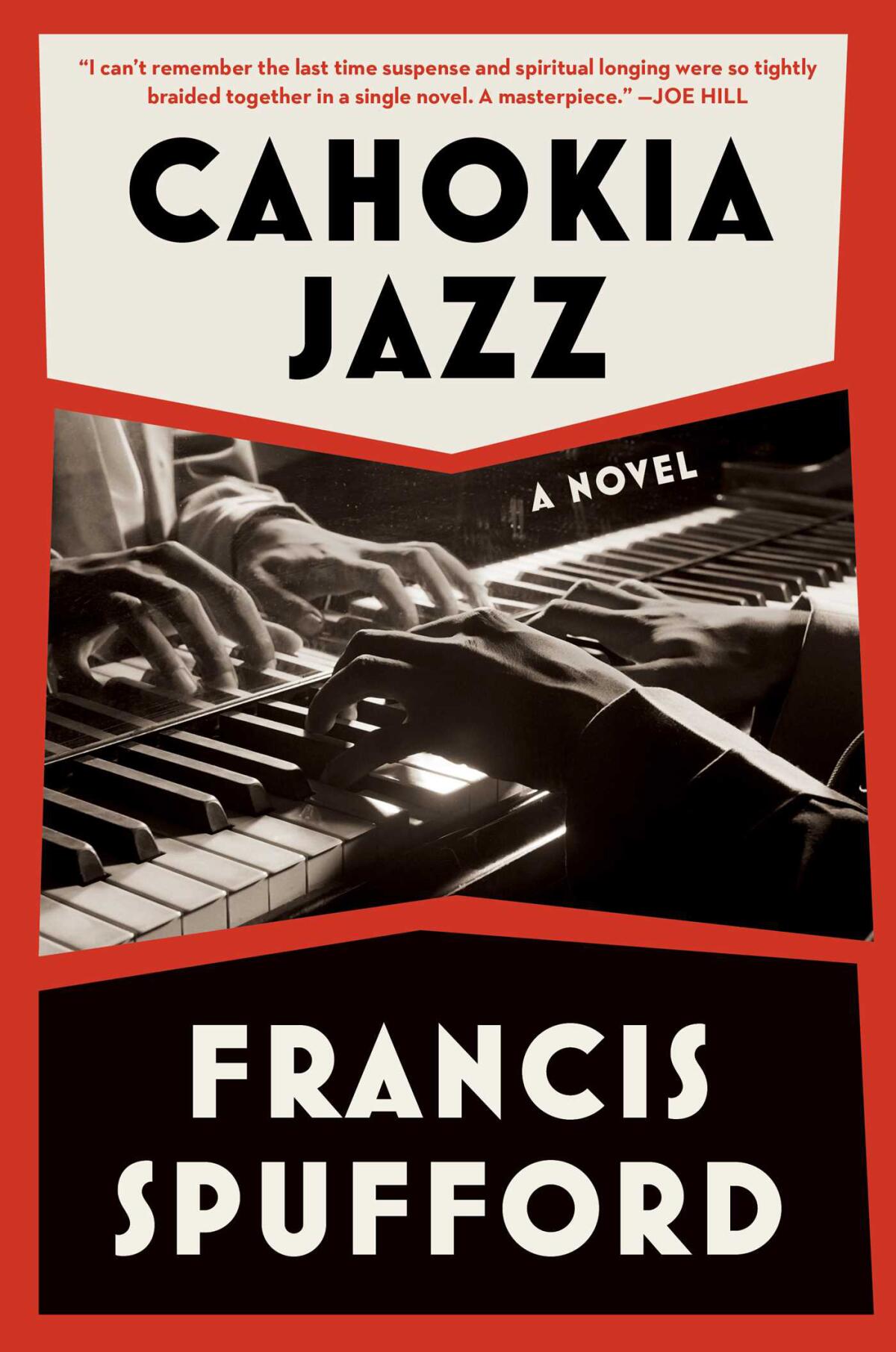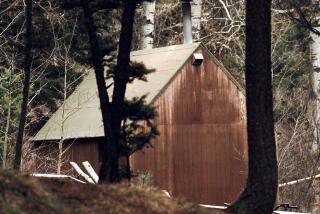This alternate version of America’s story is an audacious work of the imagination

- Share via
Book Review
Cahokia Jazz
By Francis Spufford
Scribner: 436 pages, $28
If you buy books linked on our site, The Times may earn a commission from Bookshop.org, whose fees support independent bookstores.
Everyone knows by now that a virus can bring a nation to its knees — the tiny terrorists of smallpox, Spanish flu and COVID-19 have disrupted America’s story in lethal and tragic ways. But what if one small glitch in a virus’ makeup changed everything? What if the smallpox that raged through America’s Native population had been replaced by a less lethal variant? What if Native Americans survived smallpox, fought white invaders to a standstill and created their own version of a modern society?
This is the premise of Francis Spufford’s dazzling new novel, “Cahokia Jazz.” Spufford, an award-winning British writer, tells an intricate, suspenseful and moving story that rises from the mists of America’s prehistory and morphs into an alternate version of America’s story. Part world building, part detective noir, part savage critique of our country’s (real) history, Spufford builds his creation on the foundations of a real place that grew, thrived and then vanished.
You may not have heard of Cahokia unless you hail from the Midwest. An entire civilization that rose from the fecund bottomlands of the Mississippi east of St. Louis, Cahokia drew thousands of Native Americans — 20,000 or more at its peak in the year 1100 — to its fields, plazas and temples, where they worshiped their own gods and built monuments to their way of life. Then something — no one knows quite what — caused Cahokia’s residents to disperse. For many years only a few anthropologists, wealthy collectors and the grave robbers who pillaged for them knew of its existence, and it might have disappeared altogether if not for an interstate highway project that provided the federal funds to fully explore it. Today its eerie, massive mounds have been designated a UNESCO World Heritage Site.

These facts are the bones of Spufford’s story. It’s 1922, and the middle American kingdom of Cahokia is thriving. Ruled by a Native dynasty, it is a multicultural mix of takoumas (Native Americans), taklousas (Black people) and takatas (people of European heritage). It has its own faith, a mix of Catholicism and Native American spirituality. Its land and resources have made it wealthy, and its riches are held in common by its people and run by a sturdy bureaucracy. But Cahokia is surrounded by American robber barons eager to destroy its hierarchy and appropriate its treasures. Cahokia’s would-be plunderers form an unholy alliance with the Ku Klux Klan, whose followers despise Cahokia’s multicultural essence and are itching for riot and murder.
Their rage is waiting for one lit match, and it ignites when a white office clerk is slaughtered, his heart ripped from his chest and his body left atop one of the city’s mammoth buildings. Clouds of white men bellowing “Papists!” and “Savages!” throng the streets, and the burgeoning mob has its own soundtrack: “The note of trouble in the air had definitely changed,” Spufford writes. “It was louder and closer; it was no longer a single belligerent hum glinting with accents of brass; it had diversified into a rolling scrabble of anger, holiday high spirits and sports crowd roar.” Rioters make for the takouma quarter, and the city seems destined to burn.
Cahokia needs a savior, and it comes in the guise of Joe Barrow, a half-takouma, half-taklousa cop assigned to investigate the murder. Barrow is an outsider, an orphan from one of the Native American orphanages out West. Primed from his institutionalized childhood to seek a protector, he does the bidding of Phineas Drummond, his white partner with “a face out of the funny pages” and a bad case of PTSD. As the two are drawn into a web of violence, corruption and double dealing, Joe moves from Phin’s willing sidekick to the only man with the strength and will to save Cahokia. “I suspect you of being a man of virtue,” one of Joe’s manipulators tells him. For better or worse, Joe is exactly that.
In Stephen Graham Jones’ “The Only Good Indians,” four hunters make a wasteful kill; a decade later, they pay a bloody price.
Other authors have used alternate history and the detective story model to explore history’s dark corners, notably China Miéville’s “The City & the City” and Michael Chabon’s “The Yiddish Policemen’s Union.” Spufford credits Miéville in the afterword, as well as Ursula K. Le Guin’s “Left Hand of Darkness” (“Cahokia Jazz” is dedicated to Le Guin, and her anthropologist father is a character in the book.) “Cahokia Jazz” takes on a lot, and its ambitions are huge. Does it work? For this reader, it does.
Spufford has a sure grasp of the perverted politics and relentless grind of the wheels of capitalism, circa 1922. His dialogue snaps, and he can riff on just about anything, including Joe’s avocation as a jazz pianist, with authority. There might be a little too much description, and long, learned, expository passages coming out of the mouths of police sergeants. But Spufford, whose acclaimed 2016 novel “Golden Hill” sent up 18th century Colonial America, keeps his engine running with action and intrigue, romance and suspense, and his sense of place is spellbinding. Here he captures the dank, raw power of the Mississippi: “From out of the cold brown levels of the water as it slid south … creating and tilting, dimpling against the great caissons of the Bridge, a billion billion droplets had risen, breathed by the river into the air. Each one a messenger of the ceaselessly moving silt below … digesting everything that ever fell into it on its path down the continent, from dead trees to dead people.”
“Cahokia Jazz” is an audacious work of the imagination by an author powerfully steeped in mythmaking, and I will bet my membership in the Cahokia Mounds Museum Society that some adventurous Hollywood filmmaker has already snapped it up. My only lingering question about “Cahokia Jazz” is a confounding one: the history of Cahokia is an utterly American story. Why did it take a Brit to write this book?
Gwinn, a Pulitzer Prize-winning journalist who lives in Seattle, writes about books and authors.
More to Read
Sign up for our Book Club newsletter
Get the latest news, events and more from the Los Angeles Times Book Club, and help us get L.A. reading and talking.
You may occasionally receive promotional content from the Los Angeles Times.






